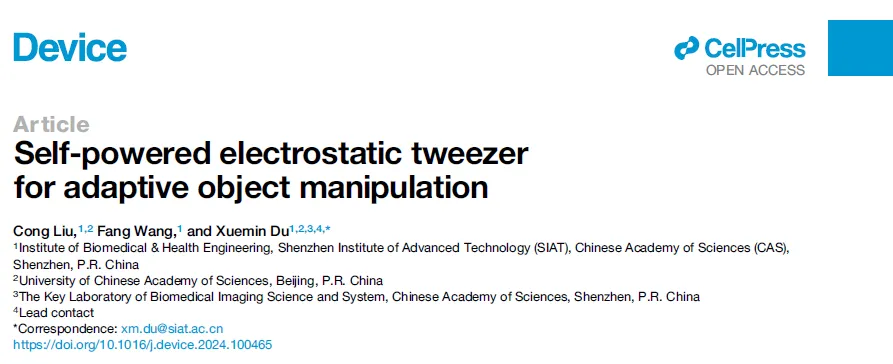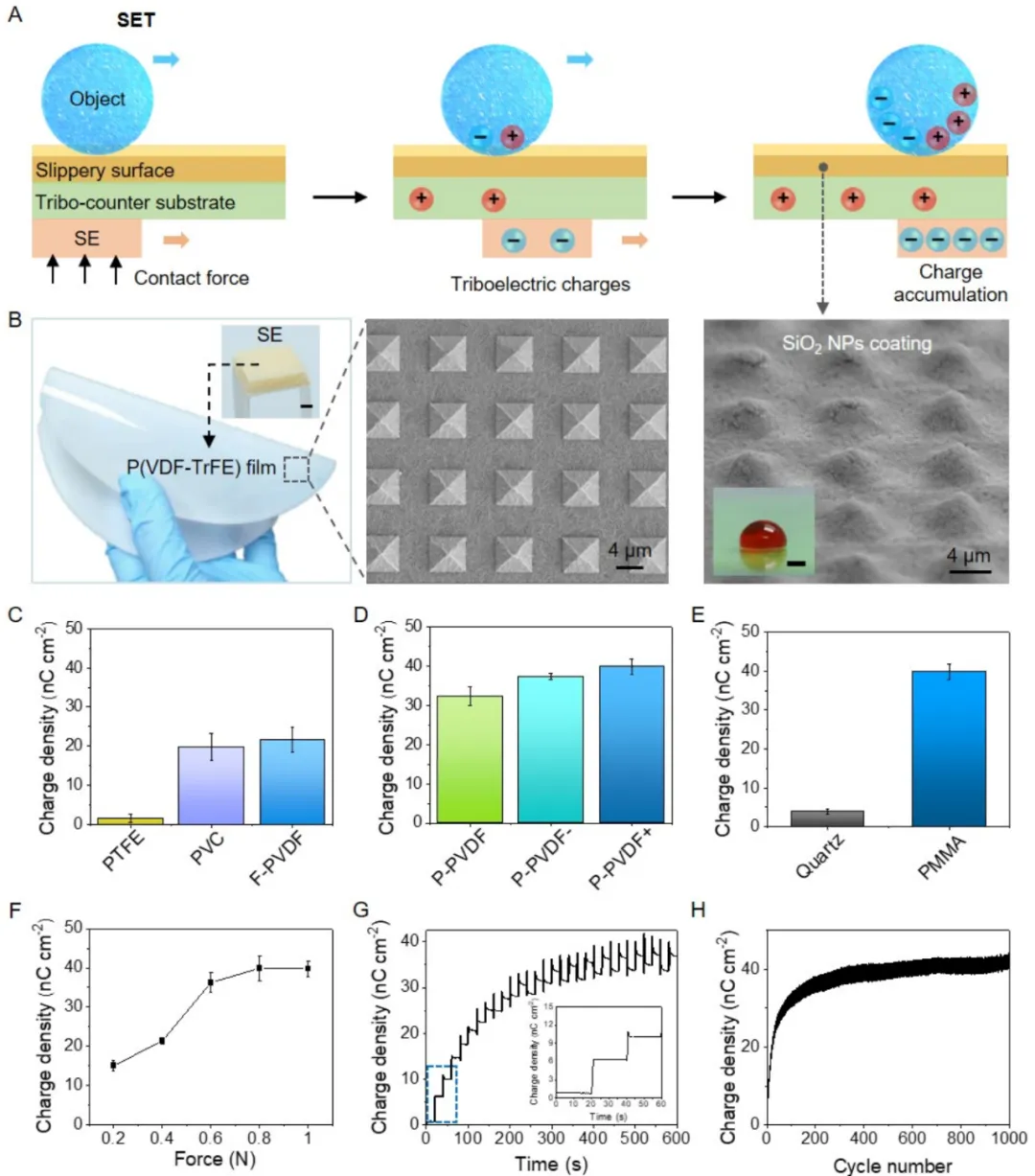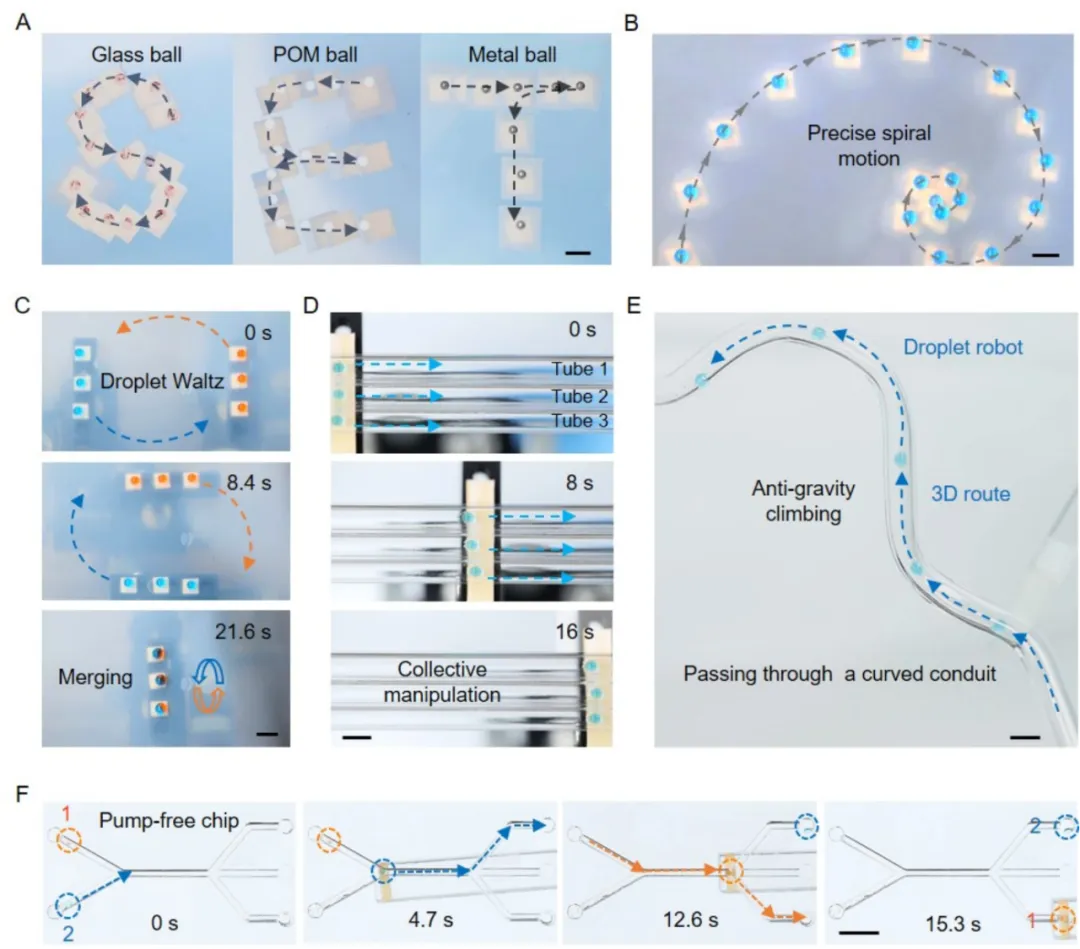
电话:0755-86387974
邮箱:s.kang5@siat.ac.cn
地址:深圳市南山区西丽深圳大学城学苑大道1068号


Because they can manipulate particles, droplets and biological samples in a non-contact manner through physical fields, technologies such as optical tweezers and electric field manipulation have been widely used in fields such as chemical reactions, micro-nano robots and biomedicine. Especially electric field manipulation technologies such as electrowetting and electrostatic tweezers have attracted much attention because they can generate strong and adjustable electric fields and achieve high spatiotemporal resolution object manipulation. However, such electric field manipulation technologies usually require pre-designed complex electrode arrays and external power supplies, thus facing challenges of low flexibility and poor adaptability in practical applications.
On July 25th, the research team led by Researcher Du Xuemin from the Research Center for Intelligent Medical Materials and Devices of the Shenzhen Institute of Advanced Technology, Chinese Academy of Sciences, made significant research progress in self-powered electrostatic tweezers and object manipulation. The related results were published in Device, the flagship journal of Cell Press, under the title "Self-powered electrostatic tweezers for adaptive object manipulation". This electrostatic tweezer is based on the charge accumulation and dynamic regulation ability during the friction process of the polyvinylidene fluoride-trifluoroethylene (P(VDF-TrFE))-based electrode, providing unprecedented flexibility and adaptability for the precise manipulation of objects of various materials such as gas, liquid and solid. It is applicable to manipulation systems from open to closed, single to multiple objects, and two-dimensional to three-dimensional manipulation surfaces, and is widely used in fields such as droplet robots, cell assembly and pump-free microfluidics.

Screenshot of the online paper
To solve the problems of the flexibility and adaptability of object manipulation, based on the previous research on light-induced charged surface materials and droplet manipulation, the research team successfully designed a triboelectrically powered electrostatic tweezer (Self-powered electrostatic tweezer, SET) that does not require complex electrode arrays and external power supplies. This SET consists of three parts: a P(VDF-TrFE)-based self-powered electrode (Self-powered electrode, SE) with a microstructure designed on the surface, a tribo-counter dielectric substrate, and a slippery surface.

The manipulation principle, design and preparation, and triboelectric performance of SET
It is worth noting that the P(VDF-TrFE)-based electrode has superior piezoelectric and triboelectric capabilities and a unique charge accumulation function. It can adjust the surface charge density in real time by regulating the interaction force between the electrode and the dielectric substrate surface, and can generate a charge density of up to ~40 nC cm-2. Moreover, this triboelectric capability can remain stable after more than a thousand friction cycles. Due to the strong triboelectric charge accumulation and regulation ability of the self-powered electrode, it can generate a real-time adjustable and strong electrostatic force, thereby achieving precise manipulation of objects of different materials such as bubbles, solid particles, and various droplets. The maximum droplet manipulation speed is as high as ~353 mm s-1.

SET achieves highly flexible and adaptive manipulation
The SET is not only applicable to various dielectric substrate materials including PMMA, quartz and alumina ceramics, but also suitable for various lubrication layer designs such as P(VDF-TrFE) and polydimethylsiloxane (PDMS). At the same time, it is also applicable to precise manipulation from open to closed systems, from handheld to mechanical manipulation systems, from single objects to multiple objects, and from two-dimensional to three-dimensional paths. The high flexibility and adaptability of the SET can be widely applied in fields such as droplet splitting, droplet robots, pump-free microfluidics and cell assembly. The SET is expected to bring brand-new technologies to the fields of non-contact object manipulation and microfluidics.
Researcher Du Xuemin from the Shenzhen Institute of Advanced Technology is the corresponding author of this article, and doctoral student Liu Cong is the author. This article has received support from scientific and technological projects such as the National Natural Science Foundation of China, the National Key Research and Development Program, the Youth Innovation Promotion Association of the Chinese Academy of Sciences, key projects of Guangdong Province, and the Shenzhen Medical Research Foundation.